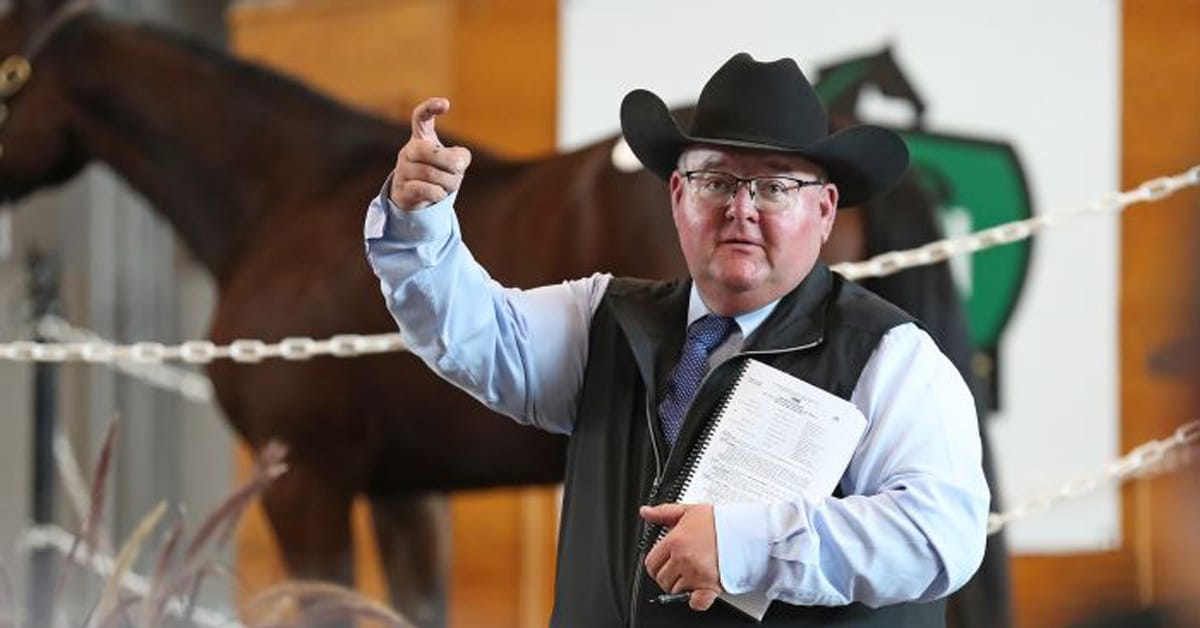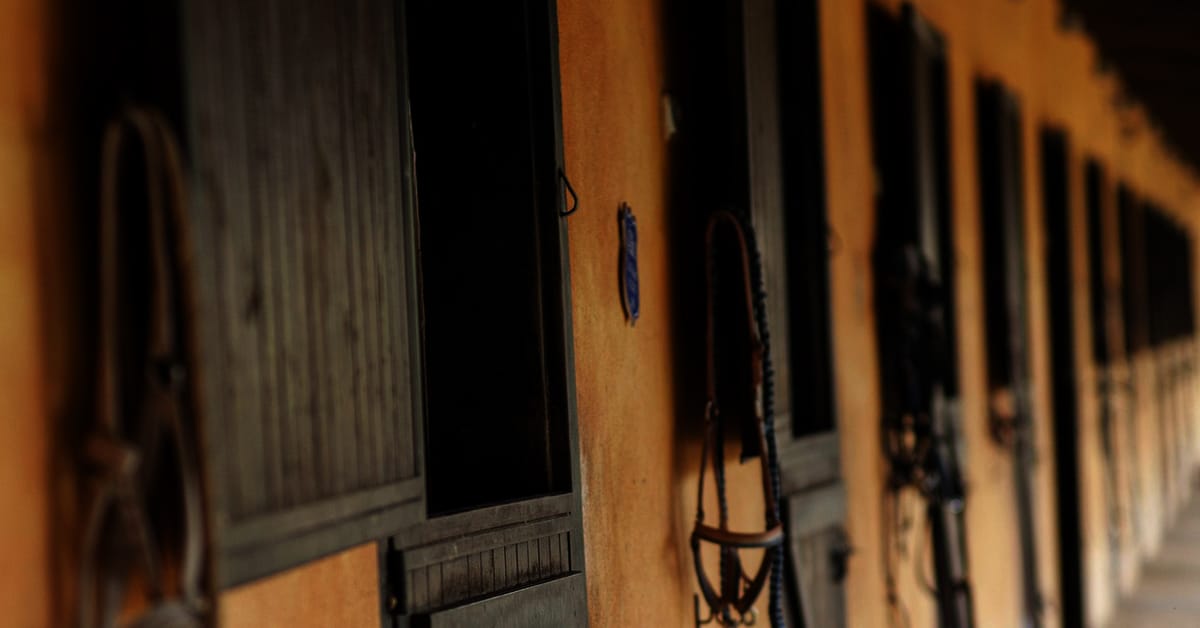Coloured Thoroughbreds ‒ since when?
That’s a question I see frequently when I post a video online of my Jockey Club-registered Thoroughbred, American Iris.

Eternal Idol.
Coloured thoroughbreds have been around for at least the last 40 years in North America, and likely since the inception of the breed. They include horses with a variety of dominant white patterns, including maximum white, single dilute creams such as palomino, buckskin and smokey black, as well as double dilute creams such as cremello, perlino and smokey cream. Greys are not considered coloured Thoroughbreds unless either their sire or dam is one, in which case they may produce a coloured Thoroughbred offspring themselves.
Up until as recently as the 1970’s, the Canadian Jockey Club refused to acknowledge palominos as an official colour and instead listed these horses as a chestnut. Although Palomino is now recognized by the Jockey Club as an official Thoroughbred colour and appears on their registration papers as such, the same cannot be said for the other dilute colours. A cremello would be registered as a palomino; a buckskin or perlino would be registered as a bay and a smokey black or smokey cream would be registered as a black.
The colours now recognized by the Jockey Club include bay, black, chestnut, dark bay/brown, gray/roan, palomino and white.
Another comment I see on a regular basis is, “I’ve worked with Thoroughbreds all my life in the racing industry and have never seen one that colour.” It doesn’t surprise me, because coloured Thoroughbreds are comparatively rare. Most don’t race because the breeder often gets offered a good price for them before they reach two years old, and then doesn’t want to risk racing them. The majority of coloured Thoroughbreds become show horses, although there are a few that have made it to the track.

American Iris.
American Iris (CAN) is a coloured Thoroughbred who did not race and became a show horse and broodmare instead. She carries the W5 white spotting gene (formerly referred to as dominant white) which is one of several established depigmentation phenotypes known to exist in horses. It occurs due to a spontaneous mutation of the KIT-gene, the result of which is a predominantly white or white spotted horse born to two solid-coloured parents. Due to the fact that this is a dominant gene, once it is present, it is passed on to subsequent offspring about 50% of the time,
In the case of American Iris, her W5 gene traces its origin back to the coloured Thoroughbred foundation sire, Puchilingui. The W5 KIT mutation is only present in direct descendants of this stallion. Iris is one of the last of this bloodline in North America, as the rest have been either sold to Europe or passed away.
Kenlake (USA), bred by Megson Farms, is a Thoroughbred mare with a different white spotting gene (W22) who raced until 2018 and is now retired. She is currently a broodmare. Her dam, Halo La Riva, was registered as white and her granddam, Painted La Riva, was described as having “spectacular” sabino markings and was also registered with the American Paint Horse Association.
Pixilated (CAN) was a palomino thoroughbred mare out of American Iris who did not race. She was also registered as a paint with the APHA. Palomino colouring results when a single allele of a cream dilution gene is paired with a chestnut-based coat. This creates a golden coloured coat with a white mane and tail.

Pixilated.
Eternal Idol (USA), is a palomino Thoroughbred colt that made one start in 2015 at Pleasanton/Oak Tree in California. His cream dilution gene appears to have been passed down by a 4th generation descendant, a buckskin (an unrecognized colour by the jockey club) mare named Lucky-Two-Bits.
The cremello colour (two cream genes on a chestnut base coat) in Thoroughbreds can usually be traced back to two prominent palomino stallions, Glitter Please and Milkie. The cremello thoroughbred stallion, Guaranteed Gold, traces his ancestry back to Milkie, whereas, the cremello stallion RFF El Dorado is a descendant of Glitter Please. Goldmaker is a cremello Thoroughbred stallion descended from both lines.
Koda Chrome (USA) is a dark brown frame overo Thoroughbred stallion who raced between 2015 and 2016. Frame overo is a white pattern with irregular, sharply defined, horizontal white patches that do not extend beyond the spine. The darker base coat in effect “frames” the horse when viewed from the side. Unfortunately, if two horses carrying the frame overo gene are bred to each other, there is a 25% chance of a foal born with lethal white syndrome (which causes severe intestinal pain and generally leads to death within a few days). This can be prevented by DNA testing of mares and stallions prior to breeding.

Koda Chrome.
Splash of Paint (AUS) is a bay frame overo mare who raced between 2021 and 2023 in Australia.
One of the most high-profile recent examples of unusual colouring is Sodashi (Japan), a rare white thoroughbred mare. How rare, you ask? The chances of producing a maximum white Thoroughbred foal are 1 in 100,000.
Maximum white can be produced when any of the multiple dominant white colour patterns (other than two frame overos) are combined. They are not the same as grey horses, nor are they albinos, as albinism does not exist in horses. Neither are they lethal white. Sodashi was an exemplary racehorse, winning the 2021 Japanese 1000 Guineas, Sapporo Nisai Stakes, Artemis Stakes, Hanshin Juvenile fillies, Oka Shu, and Sapporo Kinen. Here total earning were equivalent to over $5 million CAD.

Kenlake.
Sweet Return (UK) is a rabicano Thoroughbred. Rabicano (tickling) is characterized by white flecked hairs. In its minimal form it involves only white hairs at the base of a horse’s tail. In more dominant expression, the white hairs radiate from the tail to the flank and other parts of the body.
Toho Ullman (Japan) is a bay Gulusta Plume. Gulusta Plume, also know as skunk tail, silver tail and coon tail, is when the tail of a solid-coloured horse is light silver or flaxen, with no known gene present to account for this colour. A silver tail can be quite striking when the horse is in full flight!
The Latest










